Discover easy SEO tricks made just for online shops in this guide to Ecommerce SEO.
Find out how to make your product pages better, improve your website’s structure, use content marketing, and apply technical SEO to get more people to visit your online shop and buy your products.
Introduction to Ecommerce SEO
Ecommerce SEO is all about making online shops more visible in search engine results.
It’s important because it helps ecommerce websites get more visitors without needing to pay for ads.
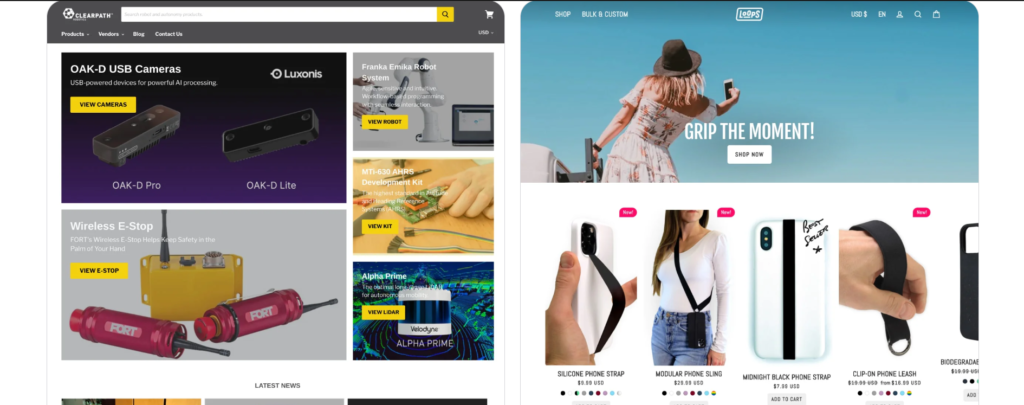
1. Understanding why SEO is vital for online stores:
- Getting Seen: SEO helps ecommerce websites show up higher in search results, so more people see them when they search online for products or services.
- Free Traffic: By using the right words and making great content, ecommerce sites can get free traffic from search engines instead of paying for ads. This helps them save money and keeps their business going for longer.
- More Sales: When a website shows up higher in search results, more people visit it. This means more potential customers, leading to more sales and money for the business.
- Beating the Competition: In today’s online world, having good SEO can make a business stand out from others. By appearing higher in search results, a company can get more customers and become a leader in its industry.
- Saving Money: SEO is cheaper than traditional advertising methods. Once a website gets good search traffic, it doesn’t need to spend as much on ads, making it a smart investment in the long run.
2. Overview of the Unique Challenges and Opportunities in Ecommerce SEO:
- Making Product Pages Better: Ecommerce sites have lots of product pages. Each one needs to be improved with the right words and info so that people searching online can find them easily. This helps bring in more customers and make more sales.
- Finding the Right Words: Some words are very popular and hard to rank for. Ecommerce SEO needs to pick less popular words that still bring in lots of customers. It’s like finding a hidden treasure!
- Making Things Easy for Visitors: SEO isn’t just about words. It’s also about making the website easy to use. This means it loads fast, works well on phones, and is easy to navigate. When people like using a website, they’re more likely to buy things from it.
- Fixing the Technical Stuff: Ecommerce websites can be complicated. SEO experts need to pay attention to technical things like how the site is built, how the links work, and how data is organized. Getting these technical details right helps search engines understand the website better.
- Creating Helpful Content: Besides product pages, other content like blog posts and guides can also help with SEO. By writing helpful articles that people want to read, the website becomes more trustworthy and shows up higher in search results.
Ecommerce SEO is crucial for online shops, helping attract visitors, improve navigation, and boost sales. Although there are challenges like optimizing product pages and competing for keywords, it also provides chances for businesses to succeed online.
Keyword Research for Ecommerce
Keyword research is super important for ecommerce SEO.
It helps find the words people use when searching online for products.
By targeting these words, ecommerce sites can get more organic traffic and rank higher in search results.
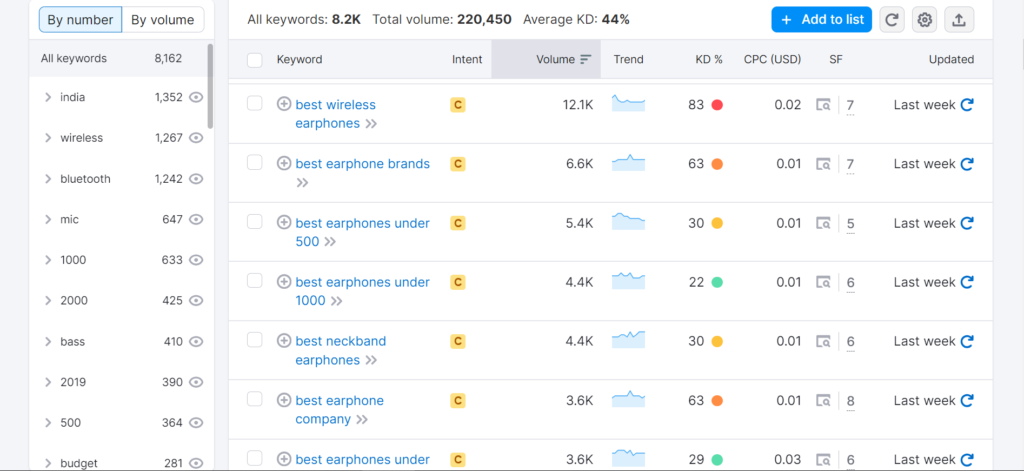
1. Finding the Right Words for Product Pages:
- Product-Specific Keywords: First, find words that directly relate to what you sell. These words should describe your products well and match what people are searching for.
- Brand Keywords: Use words that include your brand name or specific product names. This helps people find your brand when they search online.
- Category Keywords: Look for words that cover larger groups of products. These words help attract people who are still deciding what to buy within a certain category.
- User Intent: Think about why people are searching for certain words. Some might want information, while others are ready to buy. Adjust your keyword strategy based on this.
2. Long-Tail Keyword Research Strategies:
- Understanding What People Want: Long-tail keywords are longer phrases that are more specific. They may not be searched for as much, but when they are, people are more likely to buy. Make sure your content matches what people are looking for at different stages of their buying journey.
- Using Tools to Find Keywords: Use tools like Google Keyword Planner, SEMrush, Ahrefs, and Moz Keyword Explorer to find these long-tail keywords related to your products. These tools show you how many people are searching for a keyword, how difficult it is to rank for it, and other related keywords.
- Highlighting Product Features: Include specific details about your products in your long-tail keywords. For example, instead of just “running shoes,” use phrases like “best lightweight running shoes for women” or “waterproof trail running shoes.”
- Checking Out Your Competition: Look at what keywords your competitors are using. Then, find similar long-tail keywords that they might not be using. This way, you can stand out and attract more customers.
3. Tools and Techniques for Keyword Research in Ecommerce:
- Google Keyword Planner: This free tool from Google gives you information about how many times people search for certain words, how many other websites are using those words, and trends over time. It’s helpful for finding the right words to use on your ecommerce site.
- SEMrush: SEMrush has many tools for researching keywords. You can see how often people search for certain words, track how well your site ranks for those words, and find new words to use. It also helps you see what words your competitors are using.
- Ahrefs: Ahrefs is a powerful tool for SEO. It helps you research keywords by showing you how often people search for them, how hard it is to rank for them, and where there are gaps in the market. It also helps you see who is linking to your site and how healthy your site is overall.
- Moz Keyword Explorer: This tool gives you lots of information about keywords, like how often people search for them, how hard they are to rank for, and how frequently people click on them. It also gives you suggestions for new keywords to use on your ecommerce site and helps you see what other websites show up when people search for those words.
By using these strategies and tools for finding keywords, online stores can discover the right words people are searching for.
They can then use these words to improve their content, attract more specific visitors, and rank higher in search engine results.
On-Page Optimization for Ecommerce
Improving your website’s pages is super important in ecommerce SEO. It means making sure each product page is set up in a way that search engines like and understand.
Let’s dive into the important parts of this process:
1. Optimizing Product Titles, Descriptions, and Metadata:

- Product Titles: Create clear and keyword-filled titles for your products, showcasing what they offer. Put important keywords at the start for better search results.
- Product Descriptions: Write engaging and original descriptions that show off your product’s best features. Sprinkle in relevant keywords naturally to help it show up in searches.
- Metadata: Fine-tune meta titles and descriptions for every product page with the right keywords and persuasive words. Keep titles short (<60 characters) and include main keywords. Descriptions (<160 characters) should summarize key selling points.
2. Creating SEO-Friendly URLs and Navigation Structures:
- SEO-Friendly URLs: Create short, clear URLs that contain keywords related to your product. Avoid long, complicated URLs with extra details.
- Navigation Structures: Make it easy for visitors to navigate your site by organizing products into clear categories. Use breadcrumb navigation to help users and search engines move around.
3. Strategies for Optimizing Product Images and Videos:
- Image Optimization: Make sure your product images have descriptive names and alt text with keywords. Compress pictures to make them load faster without losing quality, and make sure they work well on mobile devices.
- Video Optimization: Use videos to engage users and give them more information about your products. Include keywords in your video titles, descriptions, and tags. Host your videos on trusted platforms like YouTube and share them on your product pages.
By implementing these on-page optimization strategies, ecommerce websites can enhance the visibility, relevance, and user experience of their product pages, ultimately leading to improved search engine rankings and increased organic traffic.
Technical SEO for Ecommerce Websites
Technical SEO is all about making sure your website is set up in a way that search engines can easily find and understand.
For online stores, this is super important because it helps your site show up in search results and makes sure customers can navigate it smoothly.
Here’s what you need to know about technical SEO for ecommerce sites:
1. Improving Site Speed and Performance:

- Faster Loading Times: Make your website load faster by optimizing server response time, using browser caching, and reducing page size through image compression and code simplification. Faster loading times improve user experience and boost your site’s ranking on search engines.
- Mobile-Friendly Design: Ensure your website looks great and works well on all devices, including smartphones and tablets. Use responsive design techniques to adjust your site’s layout and content for different screen sizes, providing a seamless experience for mobile users.
- Page Speed Analysis: Use tools like Google PageSpeed Insights to check your website’s performance and find areas to improve. Fix issues like slow-loading JavaScript and CSS, slow server response times, and large file sizes to speed up your site and enhance user experience.
2. Mobile Optimization for Ecommerce:

- Design for Mobile: Build your ecommerce site with mobile users in mind, focusing on ease of use and functionality on smartphones and tablets. Use responsive design techniques to ensure that your content looks good and works well on all devices.
- Speed Up Mobile Pages: Improve your mobile page load times by removing unnecessary elements, optimizing images, and prioritizing important content. Mobile users want fast-loading pages, so slow speeds can drive them away and hurt your sales.
- Enhance Mobile Usability: Simplify navigation, streamline checkout processes, and optimize form fields for touchscreen use to improve the mobile experience. Make sure buttons and links are easy to tap and that text is readable without needing to zoom in.
3. Structured Data Markup for Product Information:
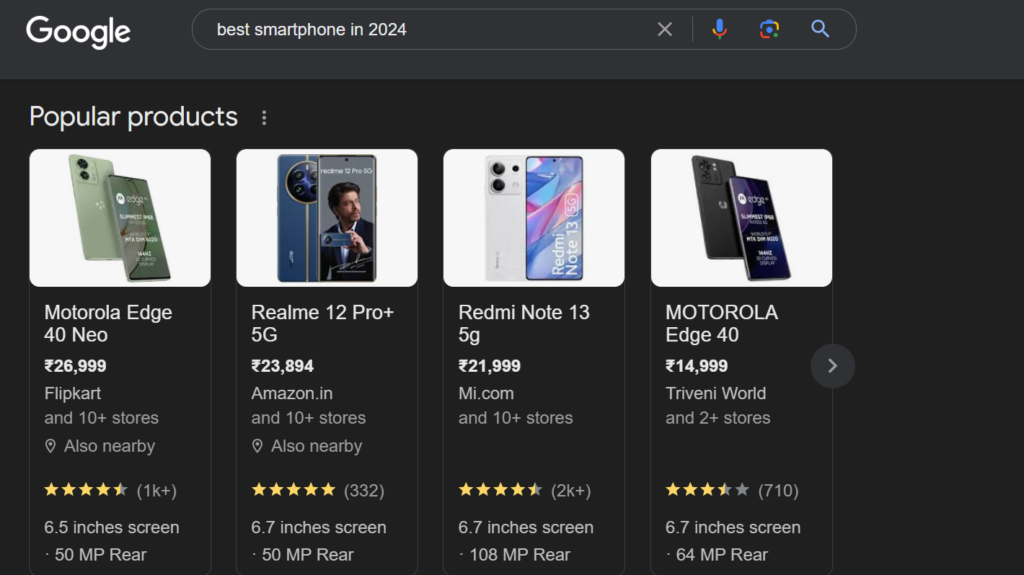
- Schema Markup: Add structured data markup, like Schema.org, to give search engines more details about your products. This includes info like product names, descriptions, prices, and reviews.
- Rich Snippets: Use structured data to create rich snippets in search results. These snippets show extra info like star ratings and prices, making your listings more attractive to users.
- Product Data Feeds: Create and optimize data feeds for shopping platforms. Include key product details and structured data to improve visibility and accuracy across different channels.
By focusing on technical SEO, like speeding up your site, making it mobile-friendly, and using structured data, you can boost your website’s visibility and performance, leading to more organic traffic and sales.
Ecommerce Content Marketing
Ecommerce content marketing means making useful and interesting content to get and keep customers, bring people to ecommerce websites, and boost sales.
Here’s what’s involved:
1. Creating High-Quality Product Descriptions and Reviews:
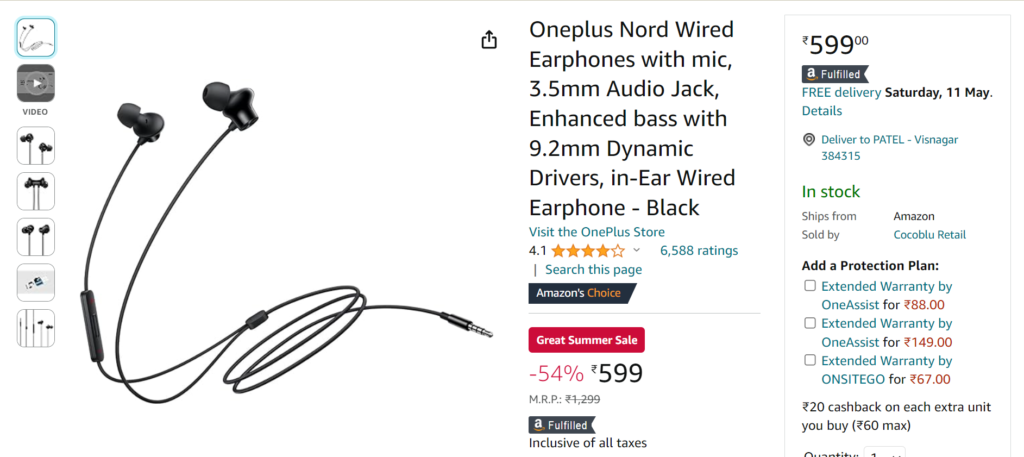
- Product Descriptions: Craft compelling and informative product descriptions that highlight the features, benefits, and unique selling points of products. Use persuasive language, storytelling techniques, and relevant keywords to engage shoppers and encourage conversions.
- Product Reviews: Encourage customers to leave reviews and ratings for products they’ve purchased. Positive reviews can build trust and credibility, influence purchase decisions, and improve search engine rankings. Respond to reviews promptly and professionally to show that you value customer feedback and engagement.
2. Content Creation Strategies for Ecommerce Blogs and Resource Centers:

- Ecommerce Blogs: Maintain an ecommerce blog to publish informative, educational, and entertaining content related to your products, industry, and target audience’s interests. Create blog posts that address common pain points, answer frequently asked questions, and provide valuable insights and tips.
- Resource Centers: Develop resource centers or knowledge bases that serve as comprehensive repositories of information, guides, tutorials, and other resources related to your products or industry. Organize content into categories and make it easily accessible and searchable for visitors.
3. Leveraging User-Generated Content for SEO:
- Customer Reviews and Testimonials: Show off reviews, testimonials, and user-generated content on your site. This stuff adds credibility, shows you’re authentic and helps with search engine rankings.
- Social Media Engagement: Ask customers to share their experiences, photos, and videos on social media. Interact with their posts by reposting, commenting, and thanking them. Social media can bring more visitors, make your brand more visible, and help with SEO.
Content marketing is super important for online shops. It helps attract and keep customers in the competitive online market.
By writing great product descriptions and reviews, making cool content for blogs and resource centers, and using customer content for SEO, online shops can get more popular, look more trustworthy, and sell more stuff.
Link Building Strategies for Ecommerce
Link building is when other websites put links to your website.
For online stores, this can make your site appear higher in search results, attract more visitors from search engines, and increase sales.
Here’s how to do it:
1. Building High-Quality Backlinks to Product Pages:
- Content Creation: Develop high-quality, informative, and engaging content related to your products or industry. This could include blog posts, guides, tutorials, infographics, or videos that offer valuable insights or solutions to common problems.
- Outreach: Reach out to relevant websites, bloggers, influencers, and industry experts in your niche to promote your content and request backlinks. Personalize your outreach emails, highlight the value of your content, and explain why it would be beneficial for their audience.
2. Guest Blogging and Contributor Opportunities:
- Identify Opportunities: Research websites, blogs, and online publications in your industry that accept guest contributions or offer contributor opportunities. Look for platforms with a strong online presence, engaged audience, and relevant content topics.
- Create High-Quality Content: Develop well-researched, original, and insightful articles or blog posts that align with the themes and audience interests of the target publication. Focus on providing value, sharing expertise, and showcasing your brand’s unique perspective or insights.
3. Earning Links through Press Releases and Media Outreach:
- Press Releases: Utilize press releases to announce new product launches, major updates, industry partnerships, or significant company milestones. Distribute press releases through reputable PR distribution services and target relevant media outlets, journalists, bloggers, and influencers.
- Media Outreach: Build relationships with journalists, bloggers, and influencers in your industry through proactive media outreach. Pitch story ideas, expert commentary, or exclusive content opportunities that are newsworthy, timely, and relevant to their audience.
Implementing these link-building strategies can help ecommerce websites acquire high-quality backlinks, improve domain authority, and enhance search engine visibility.
By building relationships, creating valuable content, and leveraging media opportunities, ecommerce businesses can strengthen their online presence and attract more qualified traffic to their website.
Ecommerce Site Architecture and Navigation
Making your website easy to navigate and well-organized is super important for making it easier for people to find things and improving your website’s performance in search engines.
Here’s a detailed look at key things to consider for your online store’s structure and how people get around it:
1. Creating a User-Friendly Site Structure for SEO:
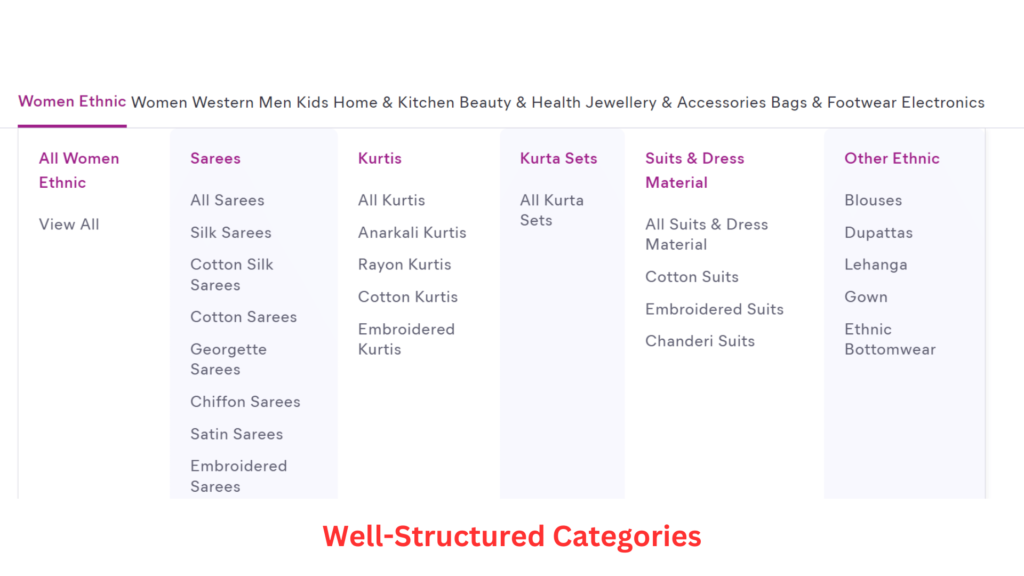
- Hierarchical Structure: Arrange your website’s pages into a clear hierarchy that mirrors how products and content are categorized. This structure helps search engines grasp the connections between pages, making them easier to crawl and index.
- Clear Navigation: Create straightforward and user-friendly navigation menus that help visitors locate products and information effortlessly. Use descriptive labels, limit the number of menu items, and highlight key categories and pages.
- Breadcrumb Navigation: Incorporate breadcrumb trails into your website to offer users a simple way to navigate back to previous pages and move through the site’s hierarchy. Breadcrumbs also aid search engines in understanding a page’s position within the website’s structure.
2. Internal Linking Strategies for Ecommerce Websites:

- Contextual Links: Add links within product descriptions, blog posts, and other content to direct users to related products, categories, or information pages. These links spread link equity across the site and make it easier for search engines to explore deep pages.
- Anchor Text Optimization: When linking between pages, use descriptive anchor text that provides context to users and search engines. Avoid generic terms like “click here” and instead use keywords or phrases that accurately represent the linked content.
- Siloing: Organize content into themed groups and create internal linking structures that reinforce the relevance and authority of each group. This helps search engines understand the focus of different sections of the site.
3. Optimizing Category Pages and Product Filters:
- SEO-Friendly URLs: Optimize category page URLs to include descriptive keywords and product attributes. Use a logical folder structure that reflects the site hierarchy and makes it easier for search engines to crawl and understand the content.
- Unique Meta Data: Customize meta titles and descriptions for category pages to include relevant keywords and entice users to click through from search engine results pages (SERPs). Ensure that each category page has unique and compelling metadata to differentiate it from other pages.
- Faceted Navigation Optimization: If your ecommerce website uses faceted navigation or product filters, ensure that they are optimized for SEO. Implement canonical tags, noindex directives, or other techniques to prevent search engines from indexing duplicate or low-value variations of category pages.
By implementing these strategies, ecommerce websites can create a user-friendly site structure, improve internal linking, and optimize category pages and product filters for better SEO performance.
This not only enhances search engine visibility but also enhances the overall user experience, leading to increased engagement and conversions.
Local SEO for Ecommerce Stores
Local SEO is crucial for ecommerce stores targeting specific geographic regions or locations.
Here’s a detailed explanation of key components related to local SEO for ecommerce:
1. Optimizing for Local Search Intent:
- Keyword Research: Find and use keywords that local customers might search for when looking for products or services in your area. Put these keywords in your product titles, descriptions, and metadata.
- Local Landing Pages: Make special pages for different places you serve. Put local info like your address, contact details, hours, and directions on these pages.
- Localized Content: Create content like blog posts and customer stories that relate to people in specific areas. Talk about local events and topics to show you understand the community.
2. Setting Up and Optimizing Google My Business Listings:
- Claim Your Listing: Make sure your business is listed on Google My Business (GMB) by verifying it. Give correct info like your business name, address, phone number (NAP), website link, and opening hours.
- Optimize GMB Profile: Improve your GMB profile by adding good photos, business info, product or service details, and special features. Ask customers to leave reviews and reply to them quickly to build trust.
- Local Posts and Updates: Share news, deals, events, and announcements with people in your area using GMB posts. Keep your GMB profile active to get more attention from potential customers.
3. Strategies for Local Link Building and Citations:
- Local Directories and Citations: Add your business details to local online directories, like Yelp or Yellow Pages. Keep the info consistent across all listings to help people find you easily in local searches.
- Local Partnerships and Sponsorships: Partner with local businesses or sponsor events to get mentioned on their websites. This can help you get more links and mentions from relevant sources, boosting your local reputation.
- Localized Content Promotion: Share your local content, like blog posts or guides, with local influencers or bloggers. Ask them to share it with their audience, which can increase your visibility and credibility in the local community.
These local SEO tactics can improve your visibility, attract more local customers, and boost sales either online or in-store.
They help you build a strong regional presence, increase brand recognition, and grow your business in specific areas.
Ecommerce SEO for Multichannel Selling
Ecommerce businesses use different ways to sell to more people and make more sales.
Here’s a detailed explanation of how SEO works when you’re selling across various channels:
1. Optimizing Product Listings on Marketplaces like Amazon and eBay:
- Keyword Optimization: Research keywords to find the right ones for your products. Use these keywords in your product titles, descriptions, and bullet points to help your products show up more in marketplace searches.
- Image Optimization: Use good-quality images that show your products well. Give your images descriptive names and alt tags with keywords to help them show up better in image searches.
- Reviews and Ratings: Ask your customers to leave reviews and ratings for your products on marketplaces. Good reviews can build trust and make your products rank higher in searches, leading to more sales.
2. Strategies for SEO on social media platforms
- Optimized Profiles: Make sure your social media profiles have the right keywords, business details, and links to your website. Use the same branding on all platforms to make your brand more recognizable.
- Content Sharing: Share interesting and related content on social media to get more followers and interaction. Use hashtags smartly to reach more people, and run contests or promotions to encourage user posts.
- Social Signals: Even though social media signals don’t directly affect search rankings, they can help indirectly by bringing in more traffic, interaction, and brand awareness. Work on having a strong presence on social media as part of your overall SEO plan.
3. Integrating Ecommerce SEO with Offline Marketing Channels:
- Branding Consistency: Keep your branding and messages consistent across different ways you advertise, like in newspapers, mail, and at events. Make sure your offline ads match what people see online so your brand stays strong and trustworthy.
- Promotional Campaigns: Use words and phrases that are good for SEO in your offline ads to get people to visit your website. You can also use special web links or QR codes to see if your offline ads are working and how well.
- Local SEO Integration: Use local SEO tricks in your offline ads, like talking about local events or sponsoring community projects. This can help get local people interested and bring them to your physical store if you have one.
By using these strategies, online shops can get seen by more people in different places, bring in more visitors and interaction, and, in the end, make more sales and money.
It’s important to change and make SEO better for each place you sell stuff and combine them well with ads you do outside the internet for a complete way to sell in many areas.
Ecommerce SEO Performance Tracking and Analytics
It’s super important to keep an eye on how well your ecommerce SEO is doing. This means looking at things like how many people visit your site from search engines, what keywords they use, and if they end up buying anything.
Let’s break down the important parts of tracking and analyzing ecommerce SEO:
1. Monitoring Keyword Rankings and Organic Traffic:
- Keyword Ranking Reports: Keep an eye on how your target keywords are ranking over time. This helps you see if your SEO efforts are working and find areas where you can improve.
- Organic Traffic Analysis: Use tools like Google Analytics to track how many people are visiting your site from search engines. Look at trends, where your traffic is coming from, and what users are doing on your site.
- Search Console Data: Google Search Console gives you insights into how your site is performing in Google search results. You can see things like how often your site shows up in searches, how many people click on it, and where it ranks for different keywords.
2. Analyzing Conversion Rates and Revenue Attribution:
- Conversion Tracking: Keep an eye on what users do on your site, like making a purchase or signing up for stuff. This helps you see how well your SEO efforts are working and where you can improve.
- Revenue Attribution: Figure out which keywords or pages bring in the most money from organic search. This helps you see what’s driving sales and where to focus your efforts.
- Multichannel Funnels: Use tools like Google Analytics to see how people go from finding your site to making a purchase, even if they use different channels along the way. This gives you a full picture of how organic search contributes to your sales.
3. Tools and Metrics for Measuring Ecommerce SEO Success:
- Google Analytics: Use Google Analytics to see how many people visit your site from organic search, how long they stay, and if they complete any goals, like making a purchase. You can customize reports to focus on SEO and find areas to improve.
- SEO Tools: Try tools like SEMrush, Ahrefs, Moz, and Screaming Frog to dig deep into your website’s SEO. They can show you things like who’s linking to your site, how well your keywords are ranking, and if there are any technical issues to fix.
- Ecommerce Platform Analytics: If you use platforms like Shopify or WooCommerce, they often come with built-in analytics. You can see how much money you’re making, what people are buying, and how frequently they’re abandoning their carts. This helps you see how SEO affects your sales.
Here’s how to track your ecommerce SEO most simply:
Keep an eye on things like:
- Where do your keywords rank
- How many people visit your site from search
- How many of those visitors actually buy something
- How much money you’re making from search
By looking at these numbers regularly and using tools like Google Analytics and SEO tools, you can see what’s working and what needs improvement. This helps you make smart decisions to grow your business online.
Advanced Ecommerce SEO Strategies
Implementing advanced ecommerce SEO strategies is essential for staying ahead of the competition and maximizing online visibility. Here’s a detailed explanation of three key advanced strategies:
1. Implementing Schema Markup for Ecommerce:
Schema markup is like a special code that helps search engines understand what’s on a website. For online stores, using schema markup can make their products and information stand out more in search results.

- Product Schema: This code gives search engines detailed info about each product, like its name, price, and brand. It helps search results show pictures, ratings, and prices, making people more likely to click on them.
- Breadcrumb Schema: Ever seen those trails of links at the top of some websites? Breadcrumb schema is like that for search engines. It helps them understand how your website is organized.
- Review Schema: This code tells search engines about customer reviews and ratings. Seeing good reviews in search results can make people trust your products more and click on them.
Using schema markup helps ecommerce websites get noticed by search engines and attract more shoppers.
2. Leveraging Dynamic Search Ads and Product Listing Ads:
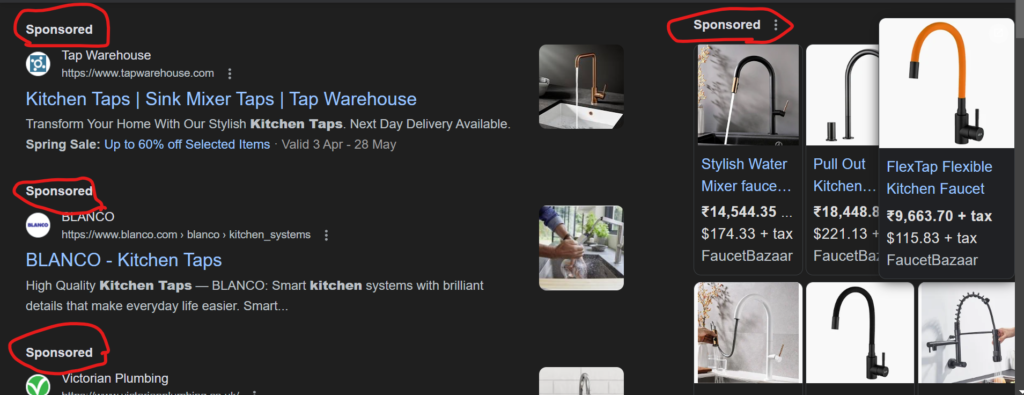
Dynamic Search Ads (DSA) and Product Listing Ads (PLA) are types of Google Ads.
- Dynamic Search Ads (DSA): These ads change their headlines and landing pages based on what’s on your website. For online shops, they’re good at showing up when people search for things related to your products.
- Product Listing Ads (PLA): Also called Google Shopping Ads, these ads display pictures, prices, and descriptions of your products in Google search results. They’re great for catching the eye of people looking for specific items to buy.
Both DSA and PLA ads have benefits for ecommerce SEO. They can make your products more visible, target the right customers, and lead to more sales. Using these ads smartly can help online stores grow their presence, get more interested visitors, and make more money from their ads.
3. Advanced Strategies for International Ecommerce SEO:
- Hreflang Tags: Use hreflang tags to tell search engines which language and region-specific versions of a page are available. This helps search engines show the right version of a page to users based on their language and location, making it easier for people to find what they need in different countries.
- Localized Content: Make content that suits the preferences and culture of your target markets. This means translating product info, tweaking meta tags and URLs for local keywords, and using images and messages that appeal to people in specific regions.
- International Link Building: Build a plan to get links from important websites in your target countries. Connect with local influencers, bloggers, and industry sites to get links that can boost your search rankings and make your site more visible abroad.
By using advanced SEO tactics like schema markup, dynamic search ads, product listing ads, and international SEO tricks, online stores can make themselves more visible, attract the right kind of visitors, and turn them into customers in tough markets. But it takes planning, hard work, and constant tweaking to make these strategies really work and keep growing your online business.
Future Trends in Ecommerce SEO
As the ecommerce landscape continues to evolve, staying ahead of emerging trends and technologies is crucial for maintaining a competitive edge. Here’s an in-depth exploration of future trends in ecommerce SEO:
1. Predictions and Insights into the Future of Ecommerce SEO:
- Voice Search Optimization: As voice-activated devices like smart speakers and virtual assistants become more popular, online stores must make their websites voice search-friendly. This means tweaking content to match how people naturally talk and ask questions so they can find what they’re looking for when using voice search.
- Visual Search Integration: Visual search lets users search for products by using images instead of words. As this technology gets better, online stores need to make sure their product images and descriptions are set up to show up in visual search results. Using special data tags for product images and using image recognition tech is important for this.
- AI and Machine Learning: Artificial intelligence and machine learning are changing how ecommerce sites do SEO. These tools can help personalize search results, predict what customers might want, and even chat with customers to offer suggestions. This makes shopping online easier and more personalized for customers.
2. Emerging Technologies and Strategies:
- Augmented Reality (AR) and Virtual Reality (VR): AR and VR let shoppers realistically see products before buying them. This helps online stores show off their products better, cut down on returns, and make customers happier.
- Blockchain Technology: Blockchain can make a big difference in ecommerce SEO by making online transactions more trustworthy, transparent, and secure. Using blockchain for things like managing the supply chain, verifying products, and protecting customer data can make ecommerce sites more reliable and respected. This can lead to better search engine rankings and more trust from shoppers.
3. Recommendations for Staying Ahead in Ecommerce SEO:
- Stay Updated on Algorithm Changes: Keep up with changes to search engine rules and adjust your SEO plans accordingly. Reading industry news, attending SEO events, and joining online groups can help you stay on top of changes.
- Invest in Mobile Optimization: Since more people use phones and tablets, make sure your website works well on these devices. Prioritize designs that work on mobile, make your site load fast, and make it easy to find things. This will help your site show up better in searches.
- Focus on User Experience (UX): Make sure your website is easy to use and helps people find what they want. Make buying stuff simple, fix any problems with checkout, and make your product pages easy to understand. This will make people happier and help your site do better in searches.
- Experiment with Emerging Technologies: Try out new tech like voice search, visual search, AR, VR, and AI to see if they can help your business stand out. By using the latest tech and ideas, you can stay ahead of other companies and do well in ecommerce.
By keeping an eye on what’s coming next, using new tech, and planning, ecommerce businesses can set themselves up for success in the changing world of ecommerce SEO.
Trying out new things, being creative, and changing with the times will be really important for doing well and growing in ecommerce SEO.